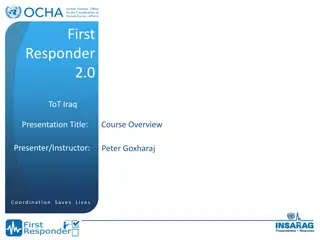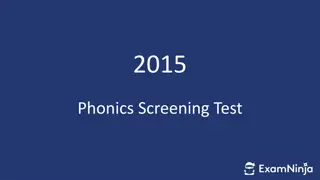
Understanding Feline Infectious Peritonitis (FIP)
Explore the insidious onset and clinical signs of Feline Infectious Peritonitis (FIP), a viral disease in cats characterized by persistent fever, tissue reaction, and high mortality. Learn about its etiology, epidemiology, pathogenesis, clinical signs, and differential diagnosis.
Download Presentation

Please find below an Image/Link to download the presentation.
The content on the website is provided AS IS for your information and personal use only. It may not be sold, licensed, or shared on other websites without obtaining consent from the author. If you encounter any issues during the download, it is possible that the publisher has removed the file from their server.
You are allowed to download the files provided on this website for personal or commercial use, subject to the condition that they are used lawfully. All files are the property of their respective owners.
The content on the website is provided AS IS for your information and personal use only. It may not be sold, licensed, or shared on other websites without obtaining consent from the author.
E N D
Presentation Transcript
A viral disease of cats characterized by insidious onset, persistent nonresponsive fever, pylogranulomatous tissue reaction, accumulation of exudative effusions in body cavities and high mortality Etiology Two genomic type of FcoV- FCoV-1 (85% Iinfections) and FCoV-2 (Similar to canine corona virus ) Faecal sedding of virus important source of transmission Epidemiology Distribution worldwide High incidence reported in kittens -3 months to 2 years of age and also above 10 years of age Incidence of clinical disease is low in most populations, especially in single cat house- holds
Pathogenesis FIP virus replicates locally in epithelial cells of upper respiratory tract or oropharynx and intestinal tract and viraemia occurs Anti-viral antibodies are produced and virus-antibody complex is taken up by macrophages (immune mediated) The virus is transported within monocytes/macrophages throughout the body and localizes at various vein walls and perivascular sites Local perivascular viral replication and subsequent pylo-granulomatous tissue reaction produce the classical lesion Multisystemic-pylo-granulomatous lesions in the omentum, on the serosal surface of abdominal organs (liver, kidney, intestine) within abdominal lymph nodes and also in different system of the body
Clinical signs Insidious in onset Clinical signs are variable and depends on virulence of strain, effectiveness of the host immune response , organ system affected Two classical forms 1. Wet or Effusive form: Target the body cavities 2. Dry or Non-effusive form: Target a variety of organs Depression Poor condition Stunted growth, weight loss, dull, rough hair coat Icterus Palpation of abdomen shows abdominal masses (granulomas or pylogranulomas) within the omentum, on the surface of viscera (especially kidney) and within the intestine Enlarged mesenteric lymph nodes Anterior uveitis, keratic precipitants, cataract formation, color change in pupil Neurological sign
Differential Diagnosis FUO Cardiac disease with pleural effusion Lesions of lymphoma (especially in kidney) CNS tumors- positive test for FeLV Pansteatitis ( Yellow fat disease)- Classical feel and appearance of fat within the abdominal cavity, pain on abdominal palpation, often on fish-only diet
Diagnosis Triad of hyper-globinemia, FCoV serum antibody titer> 160 and lymphopenia gives a very high predictive value of diagnosing FIP in patient with consistent clinical signs CBC- Leukopenia followed by leukocytosis, mild to moderate anaemia Fluid examination- Pale to straw colour, viscous, flecks of white fibrin often seen, clot upon standing, high specific gravity (1.030-1.040) and high protein concentration (> 3.5 gm/dl) Laparoscopy or exploratory laparotomy- To observe specific lesions of peritoneal cavity; to obtain a biopsy sample for histopathological or immunohistochemistry confirmation Serum biochemical profile High total plasma globulin-common Hyperbilirubinemia and hyperbilirubinuria in few cases Serum antibody test- Immunoassay, viral neutralization assays Detection of antibodies against FCoV PCR assay for antigen detection
Treatment No treatment routinely effective Patients with generalized and typical signs invariably die Immuno-suppressive drug (Prednisolone and cyclophosphamide)- limited success Corticosteroids (sub-conjunctival infection)- may help in ocular involvement Antibiotic and antiviral drugs often ineffective MLV intranasal vaccine-
Feline Herpesvirus infection A viral infection of domestic and exotic cats characterized by sneezing, fever, rhinitis, conjunctivitis and ulcerative keratitis Etiology FHV-1 causes an acute cytolytic infection of respiratory or ocular epithelium after oral, intranasal or conjunctival exposure Epidemiology Worldwide- especially in multi-cat households or facilities housing large numbers of cat because of ease of transmission under crowded circumstances Perpetuated by latent carriers- harbor the virus in nerve ganglia, especially in the trigeminal ganglion Kittens are most susceptible but cats of all ages can be affected Kittens born to carrier queens are infected at about 5 weeks of age
High fever (1060F), anorexia, general malaise, or inability to smell Rhinitis, conjunctivitis, sinusitis keratitis- Ulceration, descemetocele or panopthalmitis Abortion Blepharospasm, Ocular discharge, corneal sequestra (Brachycephalic breeds) Differential Diagnosis Feline calcivirus infection- Ulcerative keratitis, sneezing, ulcerative stomatitis Feline chlamydiosis- more chronic conjunctivitis, pneumonitis, intra-cytoplasmic inclusions in conjunctival scrapings Bacterial infection (Bordetella, Haemophilus or Pasteurella spp.)- less nasal and ocular involvement
Diagnostics CBC- Transient leukopenia followed by leukocytosis Viral isolation- pharyngeal swab sample Open mouth and skyline radiographic views of the skull- may reveal the presence of chronic disease in the nasal cavity and frontal sinuses (increased fluid densities and erosion of nasal turbinate) Stained conjunctival smear detect intranuclear inclusion body PCR testing from pharyngeal and conjunctival swabs will identify presence of the virus
Treatment Inpatient- nutritional and fluid support to anorectic cats Isolation within hospital to prevent contagion Eternal feeding of anorectic cats- oesophageal or PEG tube Medication based on clinical signs and symptoms Systemic anti-viral agent Famciclovir @ 15 mg/kg body weight at 8-12 hours intervals P.O. Opthalmic antiviral- Vidarabine (Vira- A; Parke-Davis) or idoxuridine, trifluridine for hepatic ulcers; must be inhaled every 2 hours Routine vaccination with an MLV or inactivated virus vaccine- prevent development of severe disease (Feligen CRP/Nobivac tri-cat) Endemic multi-cat facilities or households- Vaccinate kitten with dose at 10-14 days of age followed by parenterally at 6, 10 and 14 weeks of age Isolate the litter from all other cats at 3-5 weeks of age then use kitten vaccination protocol to prevent early infections Queens should be vaccinated atleast 2 weeks before breeding







